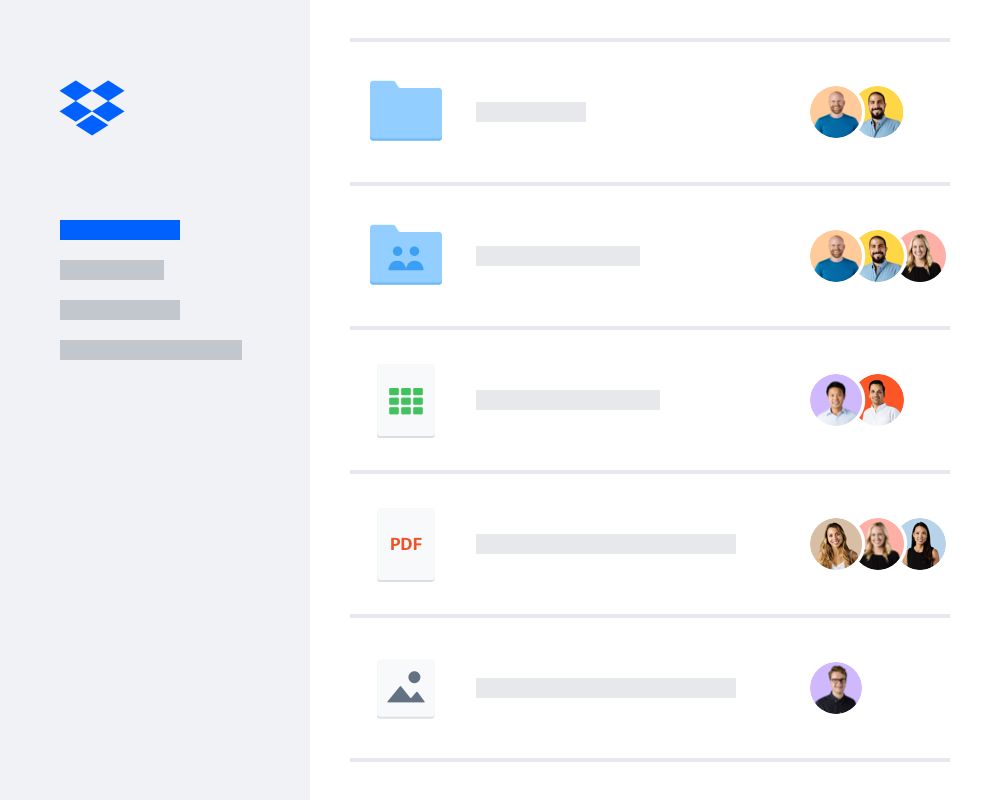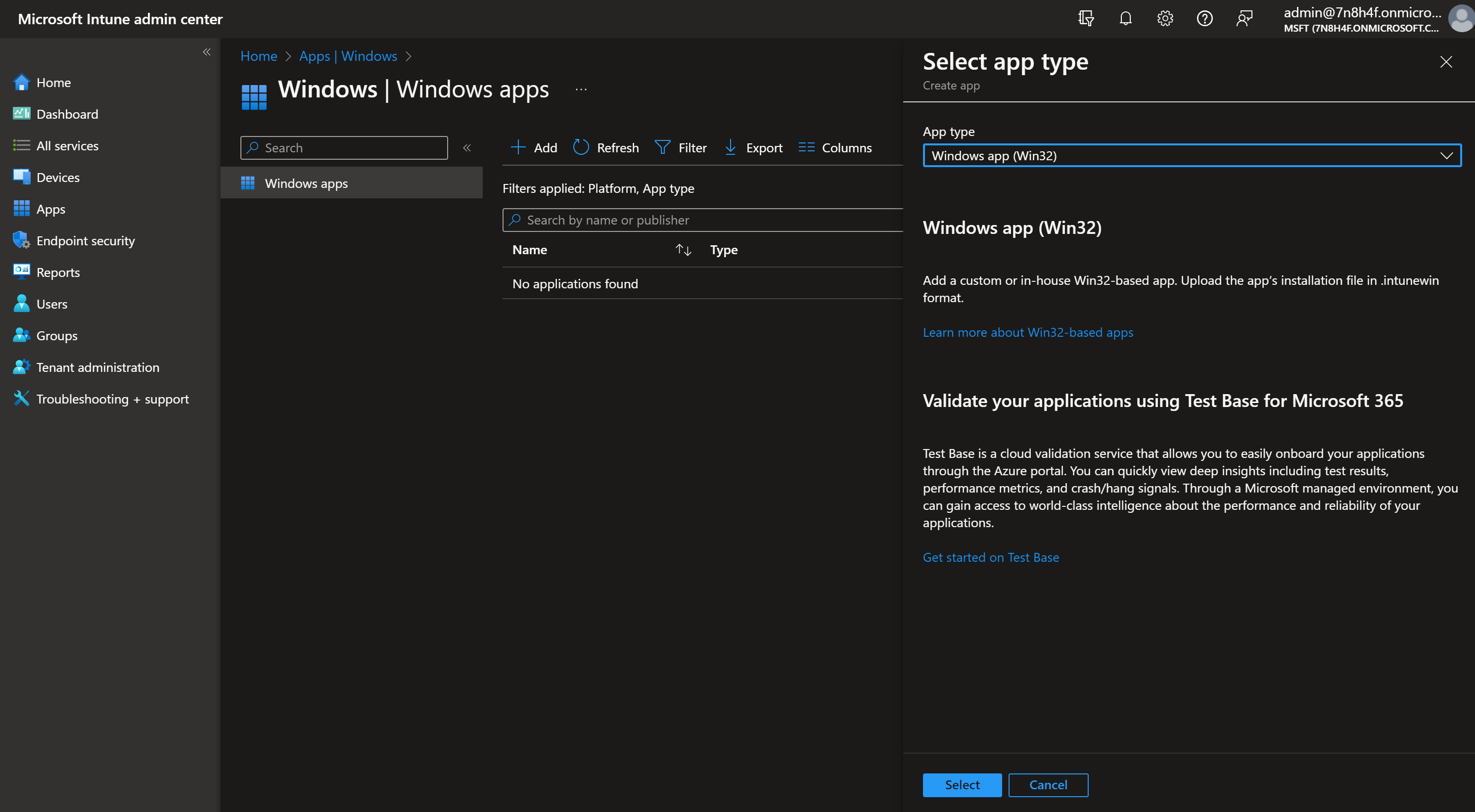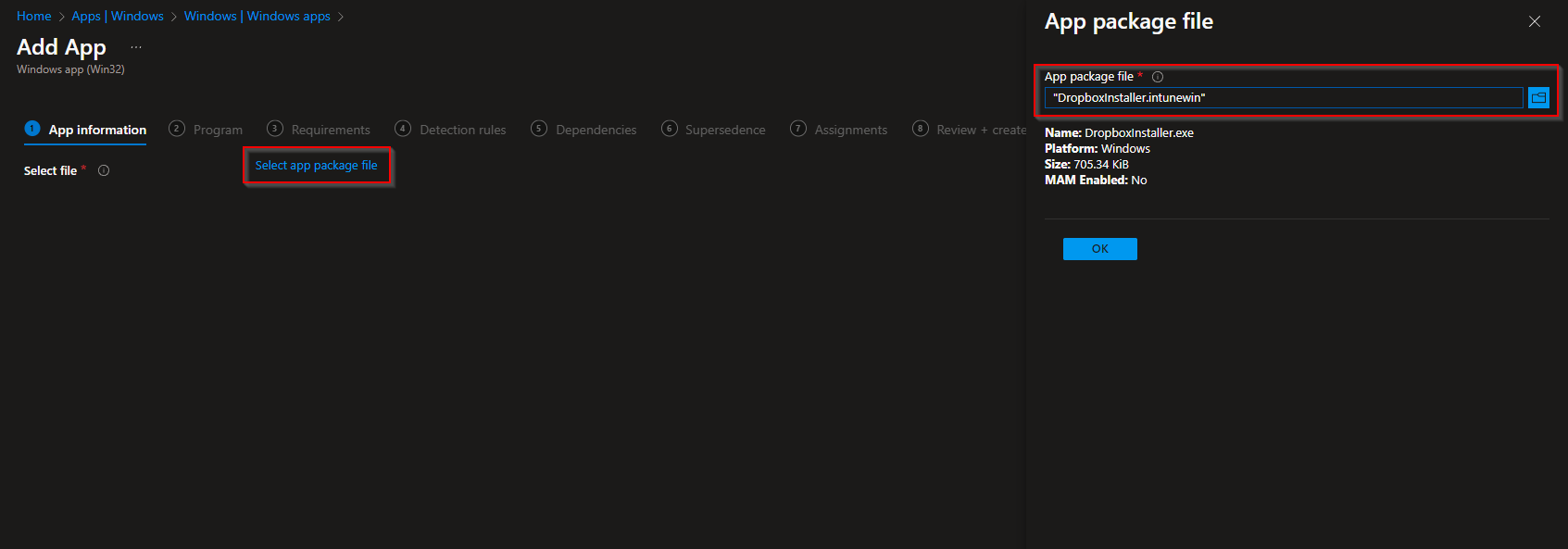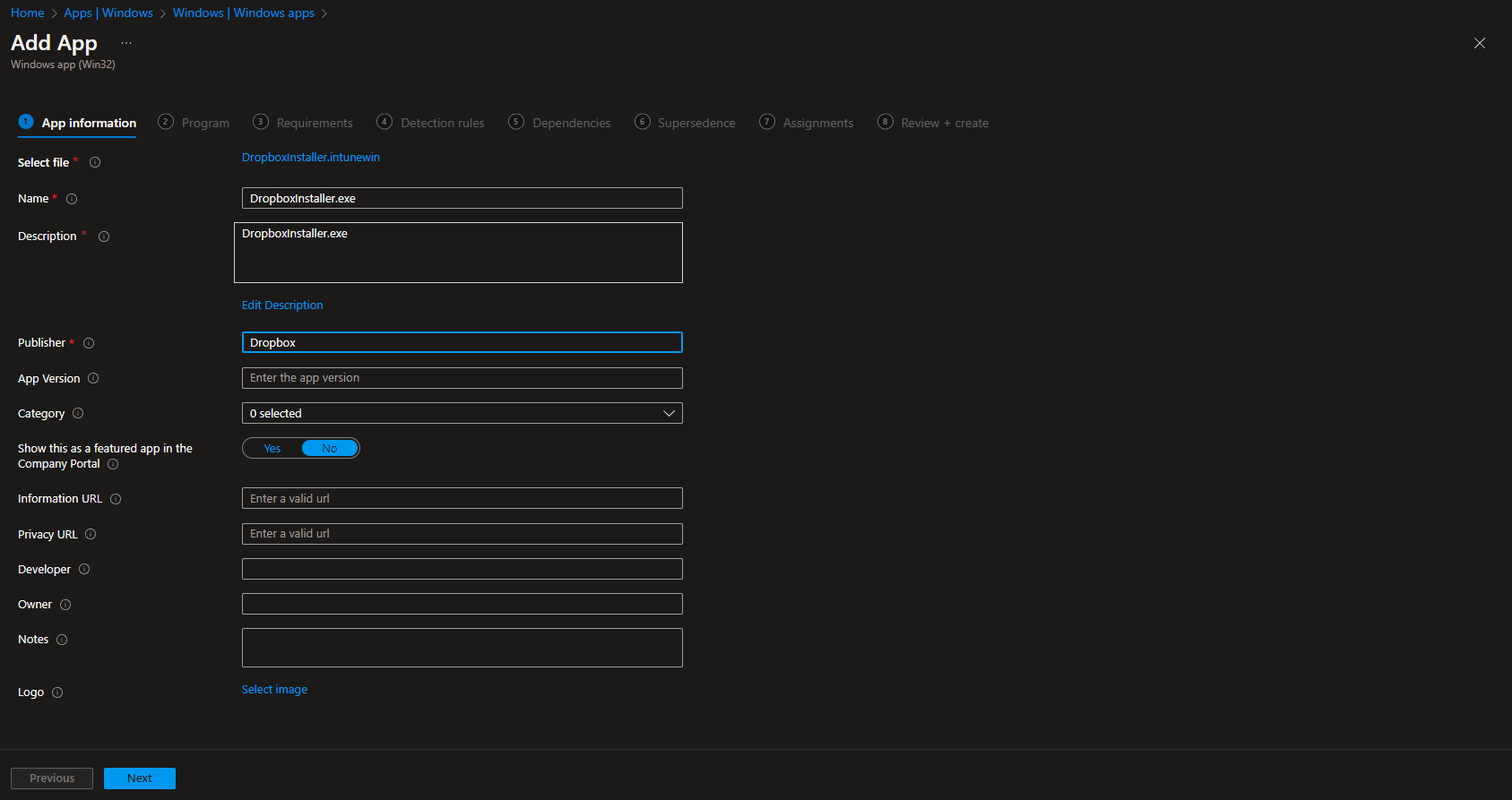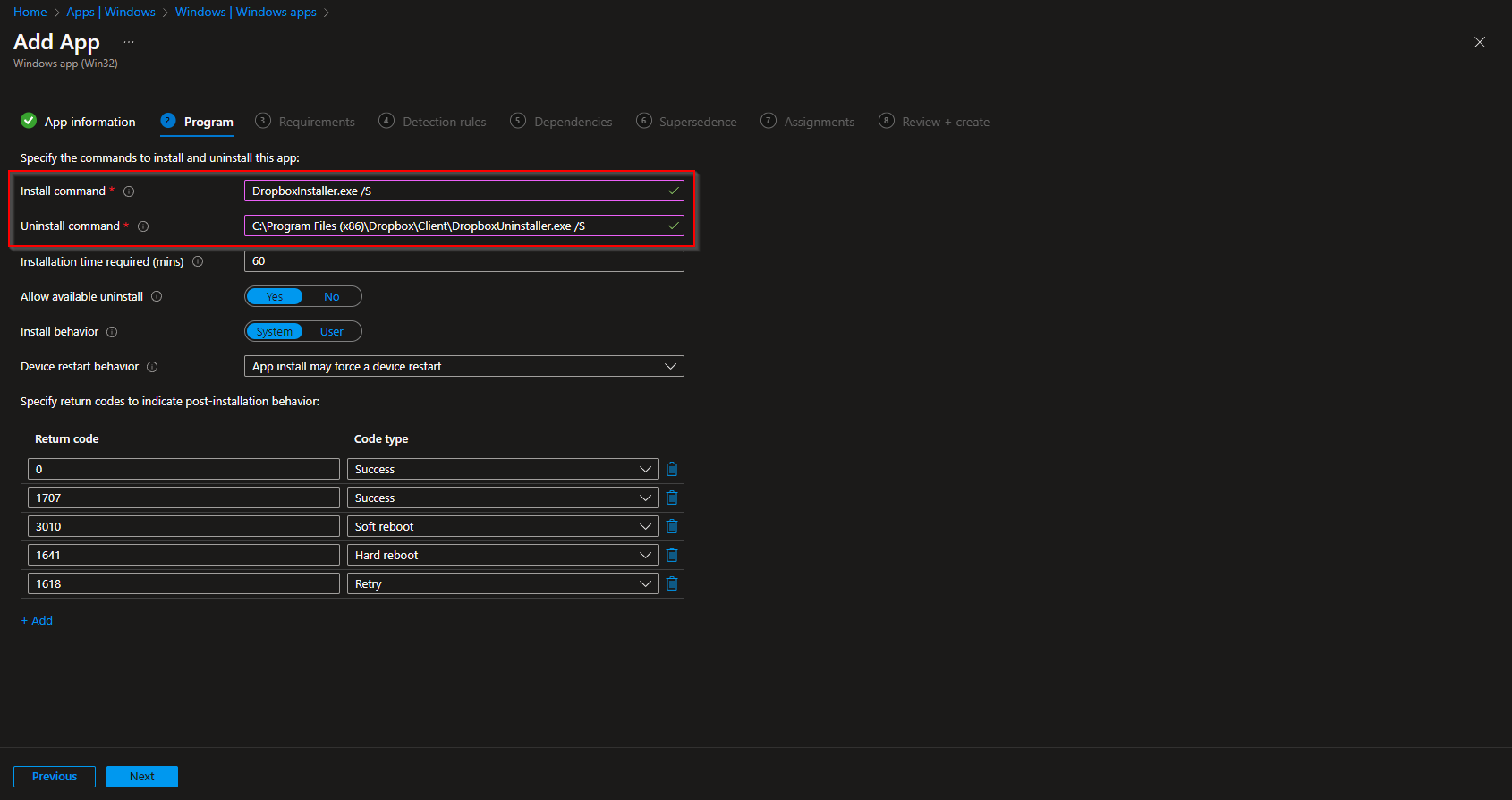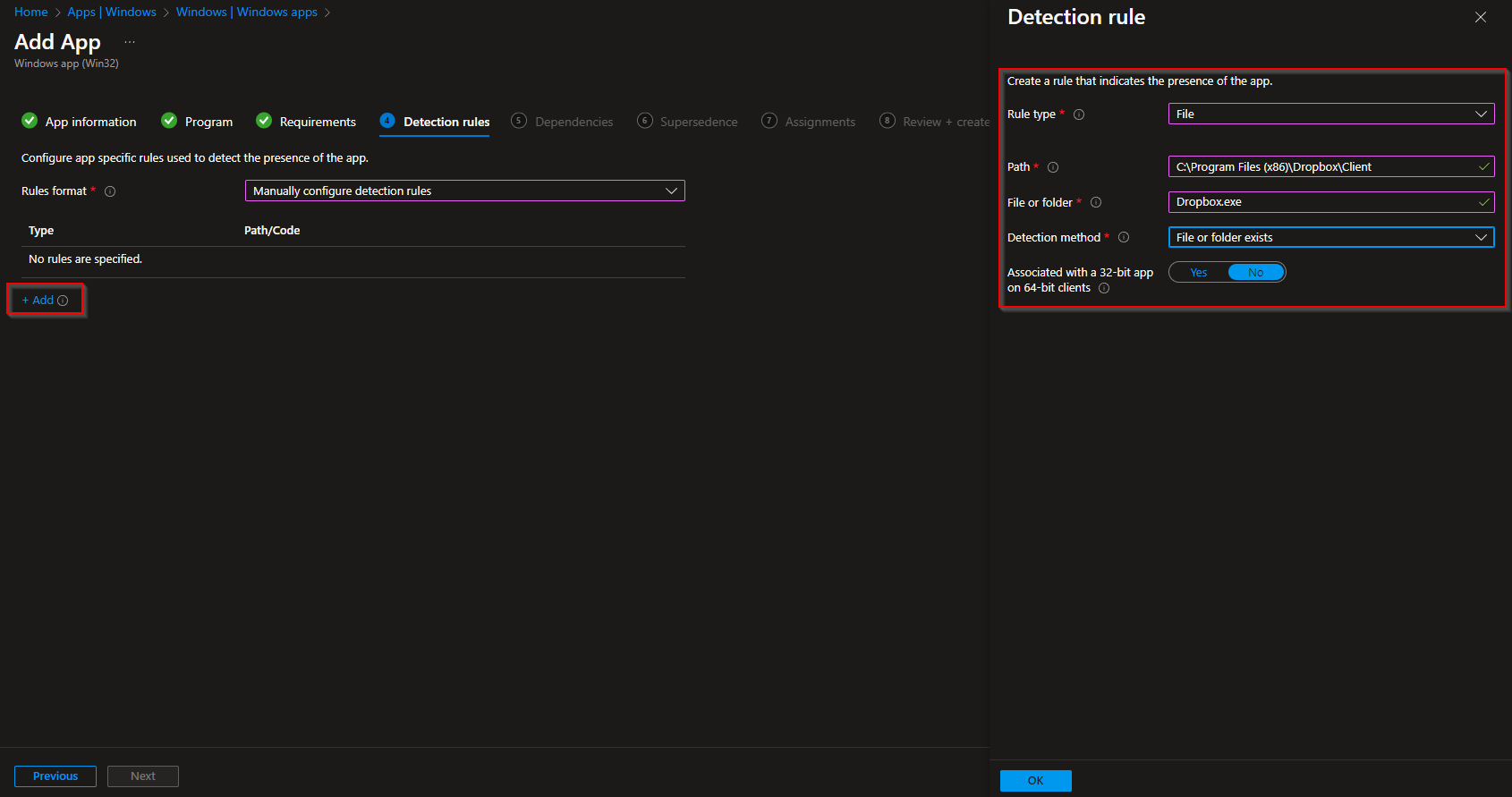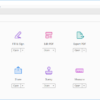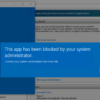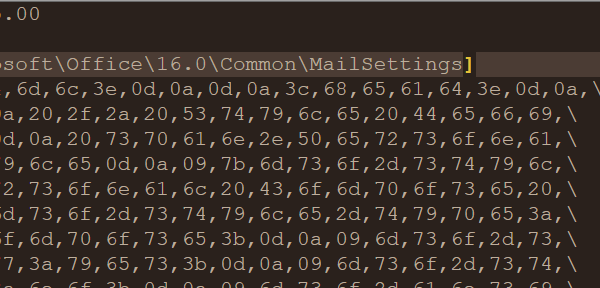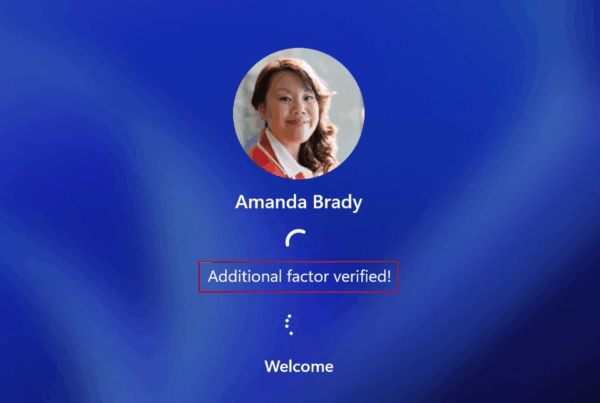How to deploy Dropbox with Microsoft Intune. Dropbox is a popular cloud storage service that allows users to sync and share files across different devices. However, if you want to deploy Dropbox to your organization’s Windows 10 devices using Microsoft Intune, you might encounter some challenges. In this blog post, I will show you how to package Dropbox as a Win32 app and deploy it using Intune. You will learn how to use the Win32 Content Prep Tool, create the installation and uninstallation scripts, configure the detection rules, and assign the app to your users or devices. By following these steps, you will be able to manage Dropbox as a Win32 app with Intune and ensure a consistent and secure experience for your users.
Table of Contents
What are we going to set up?
In this Blog post we will show you, How to deploy Dropbox with Microsoft Intune. We will perform the following steps to deploy FileZilla:
- Step 1: Download Dropbox application
- Step 2: Create Intune Win App
- Step 3: Import and deploy with Microsoft Intune
Step 1: Download Dropbox application
The first step is to download the Dropbox application from the official website. Once you have downloaded the application, you can proceed to the next step.
- Go to https://www.dropbox.com/desktop
- Click on Download now. We need this executable in step 2.
Step 2: Create Intune Win App
After you have downloaded the Dropbox application the next step is to create an Intune Win App. Just follow the steps below:
- Create a new folder DeployeDropbox on C:. Copy the downloaded executable into this folder.
- Create a new folder Output on C:
Now we are going to create an Intune Win file with the official application. First of all download the official Microsoft Intune Win App Tool.
- Download the official Microsoft Intune Win App Tool
- After installation open the Intune Win App Tool. Important: You need to open the Tool with Administrator right. Otherwise there will be an error.
In the application specify the following things:
- Please specify the source folder: C:\DeployDropbox
- Please specify the setup file: DropboxInstaller.exe
- Please specify the output folder: C:\Output
- Do you want to specify catalog folder: N
In your Output Folder, there should be a new file called DropboxInstaller.intunewin. We need this file in Step 2
Step 3: Import and deploy with Microsoft Intune
After we have created the intunewin file of the executable, we can now upload the application to Microsoft Intune and deploy it to our environment. Just follow these steps.
- Go to intune.microsoft.com
- Click on Apps
- Click on Windows
- Click on Add
- Chose App type Windows app (win32)
- Click on Select
- Click on Select app package file
- Upload your IntuneWin file which is located in C:\Output
- Click on OK
- Click on Next
- Here you can change the Settings. I leave it as it is. Dont forget to enter a Publisher
- Click on Next
On the Program tab enter the following Commands:
- Install Command: DropboxInstaller.exe /S
- Uninstall command: C:\Program Files (x86)\Dropbox\Client\DropboxUninstaller.exe /S
- Allow available uninstall: Yes
- Install behavior: System
- Click on Next
On the Requirements tab enter:
- Operating system architecture: 32-bit and 64-bit
- Minimum operating system: Windows 10 1607
- Click on Next
On the Detection rules tab enter the following:
- Rules format: Manually configure detection rules
- Click on Add
- Rule type: File
- Path: C:\Program Files (x86)\Dropbox\Client
- File or Folder: Dropbox.exe
- Detection method: File or folder exists
- Associated with a 32-bit app on 64-bit clients: No
- Click on Ok and on Next
- Define your Dependencies if applicable and click on Next
- Define your Supersedence if applicable and click on Next
- On the Assignments tab assign the Policy to a Group or to All User
- Click on Next
- And Review + Create the Policy
Congratulations! You have successfully deployed the policy.
Conclusion
In this blog post, you have learned how to deploy Dropbox as a Win32 app using Microsoft Intune. You have seen how to use the Win32 Content Prep Tool to create the app package, how to write the installation and uninstallation scripts, how to configure the detection rules, and how to assign the app to your users or devices. By following these steps, you have successfully deployed Dropbox to your organization’s Windows 10 devices and enabled them to sync and share files in the cloud. I hope you found this blog post useful and informative. If you have any questions or feedback, please leave a comment below or contact me at [your email address]. Thank you for reading!

